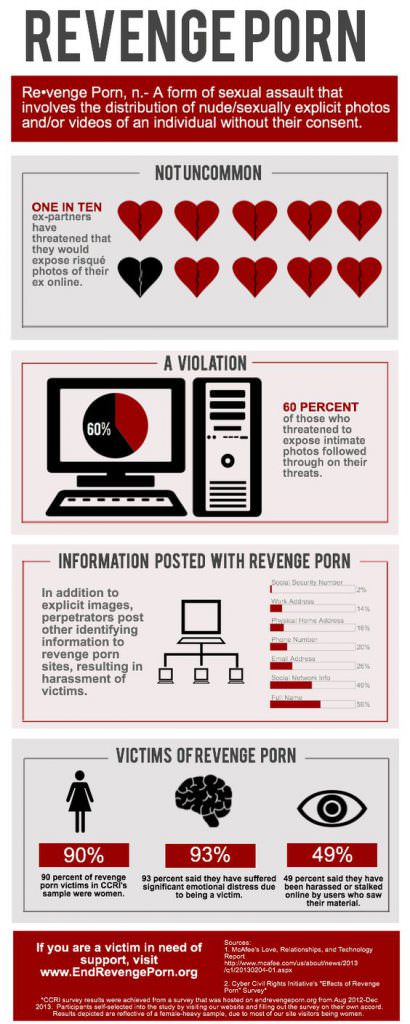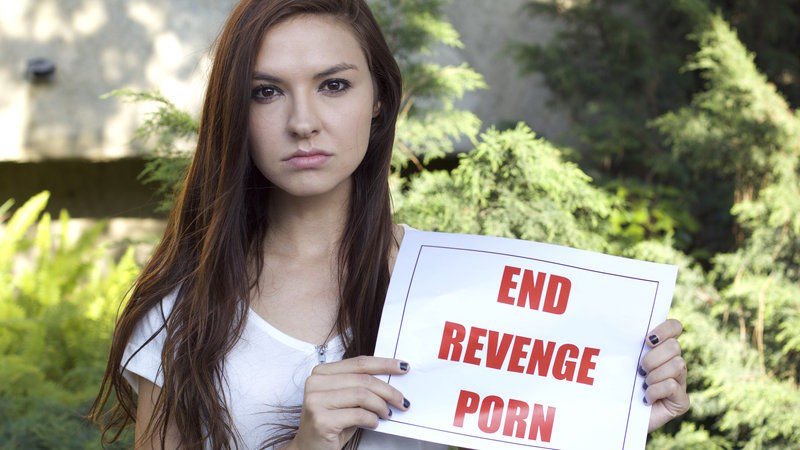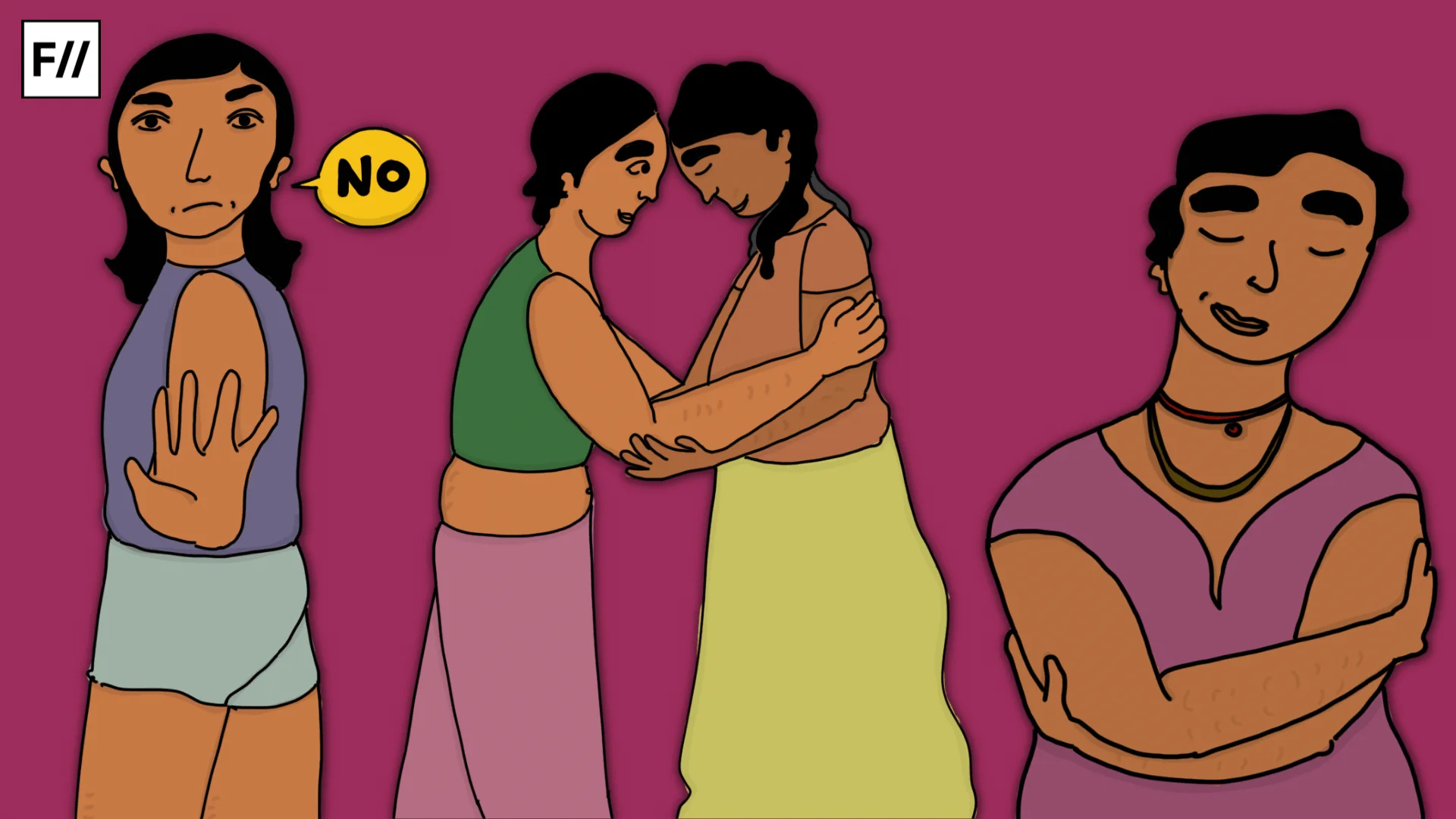By now, it has almost become a matter of great ennui to discuss the ways in which technology, irrespective of its supposed benefits, is unleashing its evils on us. And yet, many these ‘evils’ largely remain out of popular discussions even till today. One of them is, online sexual harassment, popularly called ‘Revenge Porn.’
Collins English Dictionary defines revenge porn
“…as a pornographic image or film which is published, posted, or otherwise circulated without the consent of one or more of the participants, usually with malicious and vindictive intent, such as following a break-up.”
It is important to look at it not from this short-sighted lens. It is a form of cyber bullying and sexual harassment in a virtual space, generating very real consequences for the victim. Going through the age statistics of the culprits, it is easy to note that most of them are either teenagers or young adults, that is, people in very vulnerable stages of life, who take to it to have an illusion of successfully shrouding their own insecurities and unstable temperament.
Besides, technology comes handy, in terms of reach, money and accessibility. The umbrella motive has been identified as a desire to equal scores with someone, however, there are a lot of people who just want quick money and thus find this as a lucrative option. This is mainly done by circulating naked images or videos of the victim that were exchanged during the relationship, or by installing secret cameras in the laptop of the victim or just by using Photoshop to superimpose the face of an individual (who may have never clicked a nude picture) on a naked body.
While addressing this problem, there is a need to address the several levels at which it is perpetuated and not kindle just surface- level discussions.

Credit: endrevengeporn.org
From the above infographic, we gather that 90% of victims of this type of harassment are women, arising out of failed relationships. What does it mirror? Assuming (because, only heterosexual couples are privileged to be out in public) that almost all of these relationships are between cis-gendered men and women, it just shows how a woman’s refusal or disinterest in a man is considered worthy of a ‘punishment.’
It is interesting to note how a woman’s nude pictures or videos being uploaded on the page is considered shameful for the woman and not for the one who filmed (and/or) posted them. This kind of mass reaction to this problem speaks volumes about how victim blaming is so innately embedded in societies, worldwide. It takes seconds for material to get viral on the internet and within seconds, people start slut shaming the victims mindlessly. This often leads to psychological, emotional, and sometimes financial losses for the victim.
Precisely owing to these hostile communities, a lot of cases go unreported. Victims are in perpetual fear of the content being brought more to light which would bring a lot more shame to them. This furthers the severity of the crime because the earlier it gets reported, there are still some chances of the content being removed, but if it gets reported after a long time, the content goes viral on multiple websites and platforms which makes it almost impossible to take any substantial steps for the content to be taken down.
There is a need to acknowledge that when a problem plagues a society, the marginalized, minority or repressed groups are targeted and affected like no other. A lot of people from LGBTQI community and other minorities are inflicted with this because in several societies they are still not accepted. Being a victim of online sexual harassment makes it worse for them.
The Private and the Public
It is a tricky business to try to establish a generalized notion of what is ‘private’ and what is ‘public.’ A lot (almost all) of pornography has images and videos of women that are absolutely consensual and doesn’t make the woman a victim, per se. However, there is content that have been put up without the woman’s consent. This is unacceptable. This just highlights how there isn’t a one-fits-all way to go about it and everything comes down to one of the most fundamental feminist calls for agency for women to give or not give consent for certain behaviors or situations they find themselves in. Emma Holten, a victim and activist, beautifully conveys this in her TED Talk,
“When we talk about privacy we focus on the nature of the content. But the problem is private content is different for everyone, everyone has a different relationship with different types of content.”
With increasing cases of ‘revenge porn,’ there is a need for accommodation or recognition of this type of relativity of consent on the kind of content to be posted or not to be posted. Like Holten says,
“It’s difficult but not impossible but it is worth fighting for.”
What are the solutions?
While surfing the internet about ‘revenge porn,’ a very striking observation was how most of the solutions or ‘ways to protect yourself from revenge porn’ advised people to refrain from clicking pictures or filming themselves in a way they would not want the world to see them. It is surprising to realize that the people who propose these ‘advices’ do not realize how this just adds to the guilt and shame of the victims and just robs people of their agency altogether.
This type of advice stems from the eternal stemming in of victim blaming and can be understood in juxtaposition with other similar advice (like, “Don’t wear provocative clothes”) that women get to not be raped.
There is a desperate need for people to realize how skewed such ‘solutions’ are and how they fail to recognize the problem from its root and thus miss the point completely. The focus needs to shift from moral policing to understanding consent.
The FAQ Booklet on Sexual Harassment by the Gender Studies Group of Delhi University explains this in very simple yet impactful terms.
“A culture of zero tolerance for sexual harassment is just about saying NO to non-consensual, unwanted sexual expression, not to sexual expression per se. We should make it clear that we do not believe that any kind of sex/love and its expression is wrong, in any manner. All we believe is that if the person does not want it, we should apologise, back off and move on and not harass the person in any way.”
Some hopeful steps in this direction
There are websites and platforms that are dedicated for victims and are really making a difference, especially when there is paucity of resources for help. One of the most powerful steps to create awareness about the problem is taken by CNN Money by dedicating a separate website to revenge porn, called Revenge Porn: The cyber war against women. It has various interviews and reports of victims sharing their stories with their reporter Laurie Segall that talk about the laws (or the absence of them) for helping the victims, how their lives changed after such incidents and what they could or could not do about it. It is praise-worthy how it does not, in any way, propagate the idea that not clicking certain type of pictures is the solution to this problem.
The most intriguing segment is the one in which Segall interviews Charlie Evans, associate of Hunter Moore who is considered the ‘King of Revenge Porn’ because of his underground empire through the website ‘Is Anyone Up.’ In his interview, he tells how his financial and mental problems caused him to resort to Moore’s proposal. “I was a good person.” suggests how he was conscious of the wrong he was doing and yet he could not stop probably because of social isolation and lack of the kind of help that he needed.
Another important platform is the Cyber Civil Rights Initiative (CCRI) by Holly Jacobs, a victim and activist in August 2013. It is a non-profit organization that provides support and referral services to victims, aims to raise awareness, looks for technology-based solutions to the problem and advocates state and federal legislation to prevent such abuse. Jacobs started a campaign End Revenge Porn (ERP) in August 2012 and later incorporated it with CCRI.
Revenge Porn Helpline and Voic (another such initiatives from UK) are websites to support victims of revenge porn and the first noticeable thing on the former’s website is “We Won’t Judge You”, highlighting the horrendous conditions in which victims are put in which forces them to go into isolation. It provides a safe space to victims for advice and support.
Interestingly, some delightful measures have been taken by major Social Networking Sites (SNS) to address this problem. Jessica Moreno, the Head of Community at Reddit, told CNN’s reporter about their major goals to make it easier for victims to approach them for removal of their pictures and to be “preemptive” by discouraging it before it starts. Following Reddit, Twitter and Facebook also came out in public to show their intolerance towards revenge porn. And earlier this year, Google declared that it would take into account the request of victims to remove their images from their searches. It is commendable on the part of these companies to come forward and address this issue by realizing the impact that it is creating on the society and propagating a no-tolerance environment for the same.
Very recently, Pornhub, one of the world’s largest adult entertainment websites, made it easier for victims to identify revenge porn and request for its removal. It is the first time that a major adult entertainment site has recognized non-consensual content and discouraged it. Pornhub makes available an online submission form for its users to register complaints against any non-consensual content on their website and request for its removal.
Earlier this month, the state of California launched an extremely user-friendly website to create an “online resources hub” to help people remove non-consensual content, with major catorgies like, ‘Resources for Victims’, ‘Tools for Law Enforcement’, ‘Removing Images’, ‘The Fight Against Cyber Exploitation’ etc.
What does the law say?
What is striking about revenge porn is that it plagues all the nations, worldwide. A lot of countries are trying to battle with it by passing significant laws in this direction, whereas some of them are conveniently ignoring the issue in legal terms. Countries like UK, Germany, Israel and some states of USA, have acknowledged the severity of such violations of consent and taken steps to criminalize it. However, in India, we still don’t have a separate Revenge Porn Law.
Law Quest, a firm to provide legal help to people, publishes an article on the state of revenge porn laws in India. Although there is no specific provision that speaks of revenge porn offences, the 2008 amendment to the Information Technology Act, 2000 has inserted three important sections that can prove to be extremely useful in taking action against the perpetrator of any kind of online revenge porn.
Section 66E of the IT Act 2008 provides for punishment for violation of privacy: whoever, intentionally or knowingly captures, publishes or transmits the image of a private area of any person without his or her consent, under circumstances violating the privacy of that person, shall be punished with imprisonment which may extend to three years or with fine not exceeding two lakh rupees, or with both and under S. 67A the offence of publishing material which contains sexually explicit act or conduct has been added which carries a punishment of imprisonment for a term that may extend to five years with fine up to ten lakhs.
These provisions have been employed in some cases of revenge porn in India by the victim. However the IT Act does not carry any provisions by way of helping victims take down obscene material posted on the internet by way of revenge.
Where are we heading?
Besides all the expectations we have (or not have) from the laws, there is a greater need for “shifting social norms and expectations about sexual entertainment.” Franks, who is working with US lawmakers, says to The Verge,
“If Pornhub or any other site or platform featuring adult content really wants to launch a ‘preemptive strike’ … against nonconsensual pornography, they should be focusing on truly preemptive measures, not after-the-fact procedures.”
It is time that we teach teenagers and young adults about consent and how it should be incorporated in our lives; real and virtual. In a world where we check the internet presence of a person before actually meeting the person, it becomes extremely significant to acknowledge the impact of our virtual identities on our lives and to respect that of others.
Watch John Oliver’s cunningly hilarious attack on the issue.
Featured Image Credit: A woman holding up a card that says End Revenge Porn | change.org
Title Credit: Taken from John Oliver’s take on online sexual harassment
About the author(s)
I work (read, 'write') to stay afloat.




